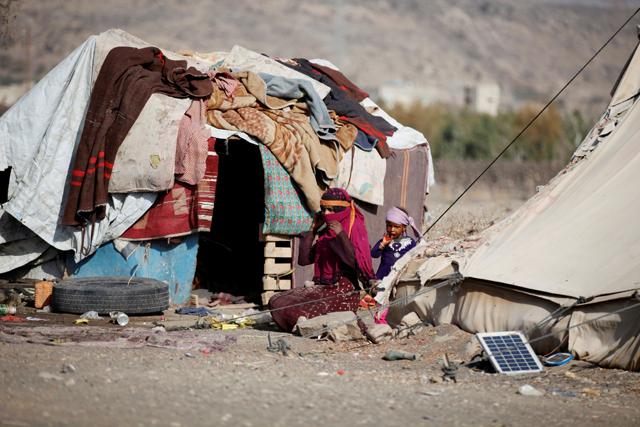You are here
Cholera spreading in Somalia, 50,000 cases foreseen — WHO
By Reuters - Apr 13,2017 - Last updated at Apr 13,2017

Newly displaced Somali women weigh their malnourished children as they try to receive medical treatment on the outskirts of Mogadishu on Tuesday (AFP photo)
GENEVA — More than 25,000 people in famine-threatened Somalia have been struck by cholera or acute watery diarrhoea and the deadly epidemic should double by this summer, the World Health Organisation (WHO) said on Thursday.
The United Nations is already racing to avoid a repeat of famine in the drought-hit Horn of African nation where more than 250,000 people died of starvation in 2011.
Cholera, which is endemic in Somalia, is an acute diarrhoeal disease that can kill within hours if left untreated. Malnourished children under five years are especially vulnerable.
Already 25,424 infected people have been identified since the start of the year, WHO spokesman Tarik Jasarevic said by e-mail, adding: "These numbers are projected to increase to 50,000 by summer."
The case fatality rate for the disease, spread by contaminated food or water, is already 2.1 per cent in Somalia, twice the emergency threshold, he said. At least 524 deaths have been recorded.
Cholera can be successfully treated with oral rehydration solution. Severe cases will need rapid treatment with intravenous fluids and antibiotics, according to the WHO.
Death rates among Somalis infected with cholera now reach 14.1 per cent in Middle Juba and 5.1 per cent in Bakool, UN spokesman Jens Laerke told a news briefing.
"We still have 2.9 million people in level 3 and 4, level 4 being the step just before we declare a famine," Laerke said, referring to the UN classification. "So almost 3 million in those critical and crisis emergency levels."
The centre of cholera outbreak is Baidoa, David Akopyan, UN Development Programme (UNDP) deputy country director for Somalia, told the briefing by telephone from the capital Mogadishu.
Thirteen of Somalia's 18 regions are affected, he said.
Some 500,000 Somalis have been internally displaced, many in search of water, as well as some 3 million pastoralists who have lost 70 per cent of their livestock due to drought, he said.
Akopyan, asked about famine, replied: "We are not exactly there, the fear is that in two months if things are not scaled up we will get there... Hopefully famine will be prevented."
Related Articles
GENEVA — Severe drought risks pushing nearly half of Somali children under five into acute malnutrition this year, with hundreds of thousand
GENEVA — The risk of mass starvation in four countries — northeast Nigeria, Somalia, South Sudan and Yemen — is rising rapidly due to drough
GENEVA — The risk of mass starvation in four countries — northeast Nigeria, Somalia, South Sudan and Yemen — is rising rapidly due to drough

















